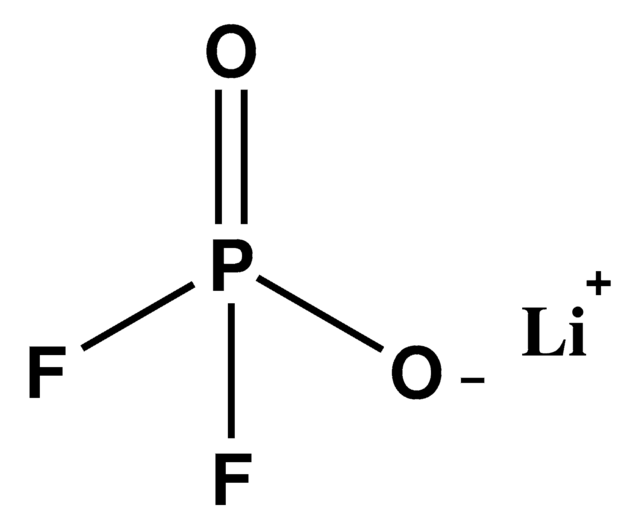935832
Lithium bis(fluorosulfonyl)imide
99.9% trace metals basis, battery grade
Sinónimos:
"Imidodisulfuryl fluoride, lithium salt", Ionel LF 101, LiFSI, Lithium bis(fluorosulfonyl)amide, Lithium bis(fluorosulfonyl)imido, Lithium imidodisulfuryl fluoride
About This Item
Productos recomendados
grade
battery grade
Quality Level
description
Application: Battery manufacturing
assay
99.9% trace metals basis
form
powder
greener alternative product characteristics
Design for Energy Efficiency
Learn more about the Principles of Green Chemistry.
sustainability
Greener Alternative Product
mp
140 °C
anion traces
chloride (Cl-): ≤5 ppm
sulfate (SO42-): ≤10 ppm
cation traces
K: ≤10 ppm
Na: ≤5 ppm
application(s)
battery manufacturing
greener alternative category
SMILES string
FS([N-]S(F)(=O)=O)(=O)=O.[Li+]
InChI
1S/F2NO4S2.Li/c1-8(4,5)3-9(2,6)7;/q-1;+1
InChI key
VDVLPSWVDYJFRW-UHFFFAOYSA-N
¿Está buscando productos similares? Visita Guía de comparación de productos
Categorías relacionadas
General description
Application
related product
signalword
Danger
hcodes
Hazard Classifications
Acute Tox. 4 Oral - Eye Dam. 1 - Muta. 2 - Skin Irrit. 2
Storage Class
11 - Combustible Solids
wgk_germany
WGK 3
flash_point_f
Not applicable
flash_point_c
Not applicable
Certificados de análisis (COA)
Busque Certificados de análisis (COA) introduciendo el número de lote del producto. Los números de lote se encuentran en la etiqueta del producto después de las palabras «Lot» o «Batch»
¿Ya tiene este producto?
Encuentre la documentación para los productos que ha comprado recientemente en la Biblioteca de documentos.
Nuestro equipo de científicos tiene experiencia en todas las áreas de investigación: Ciencias de la vida, Ciencia de los materiales, Síntesis química, Cromatografía, Analítica y muchas otras.
Póngase en contacto con el Servicio técnico









